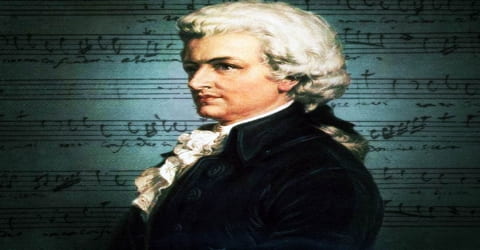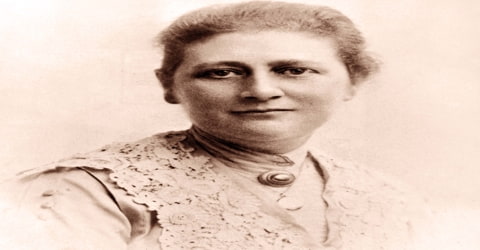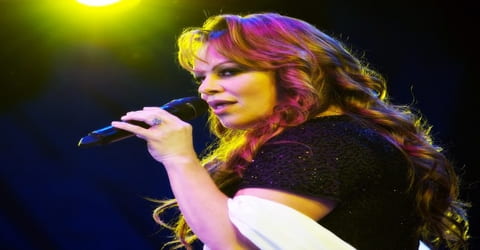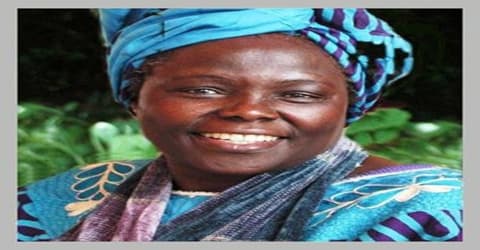Biography of Wolfgang Amadeus Mozart
Wolfgang Amadeus Mozart – A prolific and influential composer of the classical era.
Name: Wolfgang Amadeus Mozart
Date of Birth: January 27, 1756
Place of Birth: Salzburg, Austria
Date of Death: December 5, 1791
Place of Death: Vienna, Austria
Father: Leopold Mozart
Mother: Anna Maria Mozart
Spouse/Ex: Constanze Mozart (m. 1782–1791)
Early Life
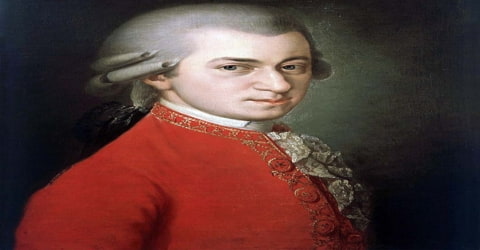
Wolfgang Amadeus Mozart, was a prolific and influential composer of the classical era, was born on January 27, 1756, in Salzburg, Austria. He was the sole-surviving son of Leopold and Maria Pertl Mozart. Born in Salzburg, Mozart showed prodigious ability from his earliest childhood. Already competent on keyboard and violin, he composed from the age of five and performed before European royalty. At 17, Mozart was engaged as a musician at the Salzburg court but grew restless and traveled in search of a better position. While visiting Vienna in 1781, he was dismissed from his Salzburg position.
Wolfgang Amadeus Mozart sits at the top of the list of music composers who hold a special place in the realm of music. In a short span of 35 years, he became the most celebrated musician, writing almost 600 musical pieces all of which are hailed as masterpieces. Throughout his life, Mozart traveled all over the world, composed in abundance, remained a voracious student of music, explored and experimented with almost all genres of music. His works are considered to be the pinnacles of symphonies, operas, and chamber music.
During his final years in Vienna, he composed many of his best-known symphonies, concertos, and operas, and portions of the Requiem, which was largely unfinished at the time of his early death at the age of 35. The circumstances of his death have been much mythologized.
The final phase of his life was very productive, as some of his best-known operas, symphonies, and concertos belong to that period. His friend Joseph Haydn wrote, ‘posterity will not see such a talent again in 100 years’.
Childhood, Family and Educational Life
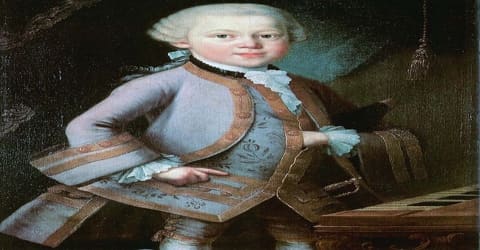
Wolfgang Amadeus Mozart, baptized as Johannes Chrysostomus Wolfgangus Theophilus Mozart, was born on 27 January 1756 to Leopold Mozart (1719–1787) and Anna Maria, née Pertl (1720–1778), at 9 Getreidegasse in Salzburg. This was the capital of the Archbishopric of Salzburg, an ecclesiastic principality in what is now Austria, then part of the Holy Roman Empire. He was the youngest of seven children, five of whom died in infancy. Hailing from Augsburg, his father was a composer a teacher and was appointed as a chapel master in the court orchestra of an archbishop of Salzburg. Mozart’s only sibling to survive was Maria Anna, his elder sister.
Mozart was baptized in the Catholic Church the day after his birth, at St. Rupert’s Cathedral in Salzburg. The baptismal record gives his name in Latinized form, as Joannes Chrysostomus Wolfgangus Theophilus Mozart. He generally called himself “Wolfgang Amadè Mozart” as an adult, but his name had many variants.
In 1762 Leopold presented his son as performer at the imperial court in Vienna, Austria, and from 1763 to 1766 he escorted both children on a continuous musical tour across Europe, which included long stays in Paris, France, and London, England, as well as visits to many other cities, with appearances before the French and English royal families.
In his early years, Wolfgang’s father was his only teacher. Along with music, he taught his children languages and academic subjects. Solomon notes that, while Leopold was a devoted teacher to his children, there is evidence that Mozart was keen to progress beyond what he was taught. His first ink-spattered composition and his precocious efforts with the violin were of his own initiative and came as a surprise to Leopold, who eventually gave up composing when his son’s musical talents became evident.
Mozart was always enthusiastic and keen to learn much beyond what he was taught then. His early compositions and efforts often surprised his father, who gave up composing when Mozart’s musical talent became apparent. Apart from music, Mozart’s father also taught him languages.
He was the most celebrated child prodigy (an unusually gifted child) of this time as a keyboard performer. Mozart also made a great impression as a composer and improviser (one who arranges or creates). In London, he won the admiration of musician Johann Christian Bach (1735–1782), and he was exposed from an early age to an unusual variety of musical styles and tastes across Europe.
Personal Life
In 1782, Wolfgang Mozart met Aloysia Weber’s family in Vienna who had moved from Mannheim. Mozart got involved in a relationship with Aloysia’s sister, Constanze. Though they were separated briefly, they got married in 1782, in St. Stephens cathedral. The couple had six children, of which only two survived.
Career and Works
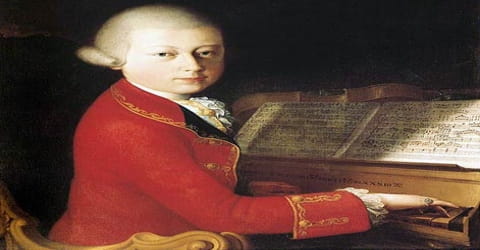
While Wolfgang Mozart was young, his family made several European journeys in which he and Nannerl performed as child prodigies. In 1762, his trip to the court of the Prince-elector Maximilian III of Bavaria in Munich and to the Imperial Court in Vienna and Prague extended to almost three and half years. On this trip, he also visited places like Munich, Mannheim, Paris, London, Hague, Zurich, and Donaueschingen. It was during this trip that Mozart got acquainted with the works of other musicians and composers; the most important among them were the works of Johann Christian Bach.
From the age of ten to seventeen, Mozart’s reputation as a composer grew to a degree of maturity equal to that of most older established musicians. He spent the years from 1766 to 1769 at Salzburg writing instrumental works and music for school dramas in German and Latin, and in 1768 he produced his first real operas: the German Singspiel (that is, with spoken dialogue) Bastien und Bastienne. Despite his growing reputation, Mozart found no suitable post open to him; and his father once more escorted Mozart, at age fourteen (1769), and set off for Italy to try to make his way as an opera composer.
In 1767, when the family was in Vienna, Wolfgang Mozart composed a Latin Drama and performed at Salzburg University. After returning back to Salzburg, Mozart went to Italy with his father in December 1769. This trip gave him a chance to meet G. B. Martini, in Bologna and was made a member of the reputed ‘Accademia Filarmonica’. While in Milan, Mozart wrote the opera, ‘Mitridate, re di Ponto (1770) and performed it successfully. Later, he visited Milan in the years 1771, 1772 and 1773 for the premiers of ‘Ascanio in Alba’ (1771) and ‘Lucio Silla’ (1772). By the end of the last Italian Journey, he wrote his first work, ‘Exsultate, jubilate’.
Wolfgang Mozart and his father returned from their last stay in Italy in March 1773. His father’s benefactor, Archbishop von Schrattenbach had died and was succeeded by Hieronymus von Colleredo. Upon their return, the new archbishop appointed young Mozart as assistant concertmaster with a small salary. During this time, young Mozart had the opportunity to work in several different musical genres composing symphonies, string quartets, sonatas and serenades, and a few operas. He developed a passion for violin concertos producing what came to be the only five he wrote. In 1776, he turned his efforts toward piano concertos, culminating in the Piano Concerto Number 9 in E flat major in early 1777. Wolfgang had just turned 21.
Between April and December 1775, Mozart developed an enthusiasm for violin concertos, producing a series of five (the only ones he ever wrote), which steadily increased in their musical sophistication. The last three – K. 216, K. 218, K. 219 are now staples of the repertoire. In 1776, he turned his efforts to piano concertos, culminating in the E♭ concerto K. 271 of early 1777, considered by critics to be a breakthrough work.
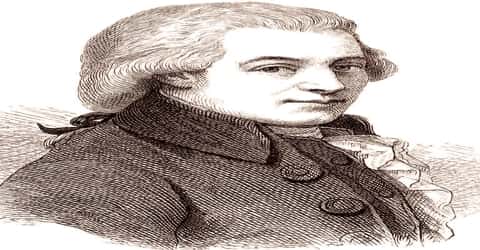
Paris was a vastly larger theater for Wolfgang Mozart’s talents. His father urged him to go there, for “from Paris the fame of a man of great talent echoes through the whole world,” he wrote his son. But after nine difficult months in Paris, from March 1778 to January 1779, Mozart returned once more to Salzburg, having been unable to secure a foothold and depressed by the entire experience, which had included the death of his mother in the midst of his stay in Paris. Unable to get hired for an opera, he wrote music to order in Paris, again mainly for wind instruments: the Sinfonia Concertante for four solo wind instruments and orchestra, the Concerto for flute and harp, other chamber music, and the ballet music Les Petits riens. In addition, he began giving lessons to make money.
The major instrumental works of this period bring together all the fields of Mozart’s earlier activity and some new ones: six symphonies, including the famous last three: no. 39 in E-flat Major, no. 40 in G Minor, and no. 41 in C Major (the Jupiter – a title unknown to Mozart). He finished these three works within six weeks during the summer of 1788, a remarkable feat even for him.
Mozart was offered the post of an organist in Versailles, which he rejected and eventually fell into debts. In 1778, Mozart’s mother passed away. Mozart was again offered the job as court organist and concertmaster in Salzburg. Though he was not willing to accept it but, unable to find a suitable job in Mannheim and Munich, Mozart returned home in 1779 and took up the job.
Among the better-known works which Mozart wrote on the Paris journey are the A minor piano sonata, K. 310/300d and the “Paris” Symphony (No. 31), which were performed in Paris on 12 and 18 June 1778.
In Vienna, Mozart often performed as a pianist. Soon, he established himself as a keyboard player and a composer. The opera, ‘Die Entführung aus dem Serail’ (‘The Abduction from the Seraglio’) which was premiered in 1782 was a great success and stamped his reputation as a talented composer. The work was soon being performed “throughout German-speaking Europe”, and fully established Mozart’s reputation as a composer.
In the field of the string quartet Mozart produced two important groups of works that completely overshadowed any he had written before 1780: in 1785 he published the six Quartets (K. 387, 421, 428, 458, 464, and 465) and in 1786 added the single Hoffmeister Quartet (K. 499). In 1789 he wrote the last three Quartets (K. 575, 589, and 590), dedicated to King Frederick William (1688–1740) of Prussia, a noted cellist.

(Fortepiano played by Mozart in 1787, Czech Museum of Music, Prague)
In the course of 1782 and 1783, Mozart became intimately acquainted with the work of Johann Sebastian Bach and George Frideric Handel as a result of the influence of Gottfried van Swieten, who owned many manuscripts of the Baroque masters. Mozart’s study of these scores inspired compositions in Baroque style and later influenced his personal musical language, for example in fugal passages in Die Zauberflöte (“The Magic Flute”) and the finale of Symphony No. 41.
During this time, Mozart met Joseph Haydn and the two composers became admiring friends. When Haydn visited Vienna, they sometimes performed impromptu concerts with string quartets. Between 1782 and 1785 Mozart wrote six quartets dedicated to Haydn. Mozart’s six quartets dedicated to Haydn (K. 387, K. 421, K. 428, K. 458, K. 464, and K. 465) date from the period 1782 to 1785, and are judged to be a response to Haydn’s Opus 33 set from 1781. Haydn in 1785 told Mozart’s father: “I tell you before God, and as an honest man, your son is the greatest composer known to me by person and repute, he has taste and what is more the greatest skill in composition.”
In 1784, Mozart became a Freemason, a fraternal order focused on charitable work, moral uprightness, and the development of fraternal friendship. Mozart was well regarded in the Freemason community, attending meetings and being involved in various functions. Freemasonry also became a strong influence in Mozart’s music.
The first important result was the German Singspiel entitled Die Entführung aus dem Serail (1782; Abduction from the Seraglio ). Mozart then turned to Italian opera. Mozart produced his three greatest Italian operas: Le Nozze di Figaro (1786; The Marriage of Figaro ), Don Giovanni (1787, for Prague), and Cosi fan Tutte (1790). In his last opera, The Magic Flute (1791), Mozart turned back to German opera, and he produced a work combining many strands of popular theater and including musical expressions ranging from folk to opera.
After the huge success of ‘Die Entführung aus dem Serail’, Mozart did not contribute much to the world of music for some time. Later, he collaborated with librettist Lorenzo Da Ponte and composed ‘The Marriage of Figaro’, which was premiered in Vienna in 1786. The warm reception it received inspired him to go for a second collaboration with Da Ponte and composed ‘Don Giovanni’, premiered in 1787. The opera met with success in Prague and in Vienna in the following year. These two operas are the masterpieces in the genre of opera even today, though, the musical complexities pose a great challenge to the performers as well as to the listeners. Mozart’s father passed away in 1787.
In December 1787, Mozart finally obtained a steady post under aristocratic patronage. Emperor Joseph II appointed him as his “chamber composer”, a post that had fallen vacant the previous month on the death of Gluck. It was a part-time appointment, paying just 800 florins per year, and required Mozart only to compose dances for the annual balls in the Redoutensaal. This modest income became important to Mozart when hard times arrived. Court records show that Joseph’s aim was to keep the esteemed composer from leaving Vienna in pursuit of better prospects. In 1787, the young Ludwig van Beethoven spent several weeks in Vienna, hoping to study with Mozart. No reliable records survive to indicate whether the two composers ever met.
By 1786, the musicians in Vienna were having a tough time as Austria was at war and the financial capabilities of aristocracies to patronize musicians were at stake. By 1788, Mozart, along with his family moved to the suburb of Alsergrund to cut down his rental expenses. During this time, Mozart traveled to Leipzig, Dresden, Berlin, Frankfurt, Mannheim, and other German cities in search for better fortunes. These journeys did not yield much success.
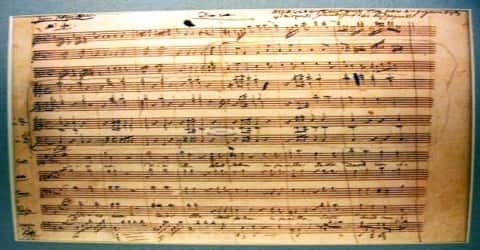
(Facsimile sheet of music from the Dies Irae movement of the Requiem Mass in D minor (K. 626) in Mozart’s own handwriting (Mozarthaus, Vienna))
Mozart’s last year was, until his final illness struck, a time of great productivity and by some accounts, one of personal recovery. He composed a great deal, including some of his most admired works: the opera The Magic Flute; the final piano concerto (K. 595 in B♭); the Clarinet Concerto K. 622; the last in his great series of string quintets (K. 614 in E♭); the motet Ave verum corpus K. 618; and the unfinished Requiem K. 626.
In September 1791, Mozart was in Prague for the premiere of the opera La Clemenza di Tito, which he was commissioned to produce for the coronation of Leopold II as King of Bohemia. Mozart recovered briefly to conduct the Prague premiere of The Magic Flute, but fell deeper into illness in November and was confined to bed. Constanze and her sister Sophie came to his side to help nurse him back to health, but Mozart was mentally preoccupied with finishing Requiem, and their efforts were in vain.
He experienced great satisfaction in the public success of some of his works, notably The Magic Flute (which was performed several times in the short period between its premiere and Mozart’s death) and the Little Masonic Cantata K. 623, premiered on 17 November 1791.
Death and Legacy
Mozart fell ill during the premiere of the opera ‘Opera La clemenza di Tito’ in 1791. Though he continued to make public appearances for some more time, his health continued to deteriorate and made him bedridden. His health deteriorated on 20 November, at which point he became bedridden, suffering from swelling, pain, and vomiting.

Wolfgang Mozart died in his home on 5th December 1791 (aged 35) at 12:55 am. The New Grove describes his funeral:
Mozart was interred in a common grave, in accordance with contemporary Viennese custom, at the St. Marx Cemetery outside the city on 7 December. If, as later reports say, no mourners attended, that too is consistent with Viennese burial customs at the time; later Otto Jahn (1856) wrote that Salieri, Süssmayr, van Swieten, and two other musicians were present. The tale of a storm and snow is false; the day was calm and mild.
Though Mozart lived only for 35 years, Mozart’s legacy is unparalleled. With almost 600 musical pieces, Mozart’s influence reigns supreme in all the genres of music ranging from symphonies, concertos, operas, chamber music to piano solo. He is undoubtedly one of the greatest musicians ever, if not the greatest.
Wolfgang Mozart’s music presented a bold expression, often times complex and dissonant, and required high technical mastery from the musicians who performed it. His works remained secure and popular throughout the 19th century, as biographies about him were written and his music enjoyed constant performances and renditions by other musicians. His work influenced many composers that followed – most notably Beethoven. Along with his friend Joseph Haydn, Mozart conceived and perfected the grand forms of symphony, opera, string ensemble, and concerto that marked the classical period. In particular, his operas display an uncanny psychological insight, unique to music at the time, and continue to exert a particular fascination for musicians and music lovers today.
Information Source:
